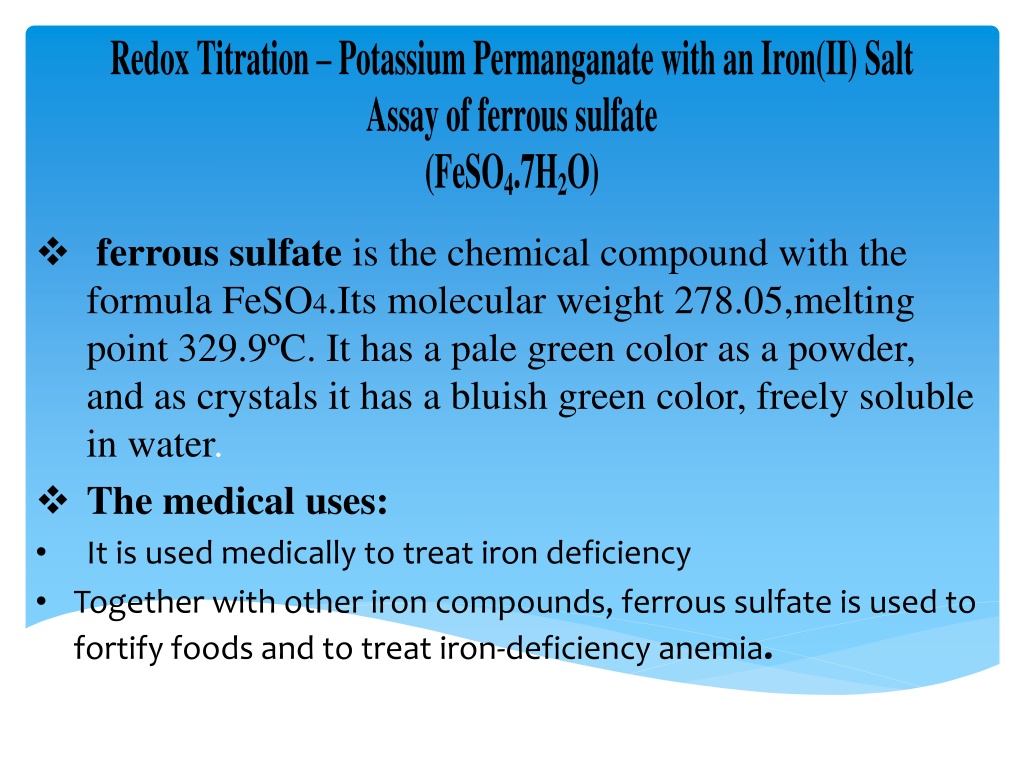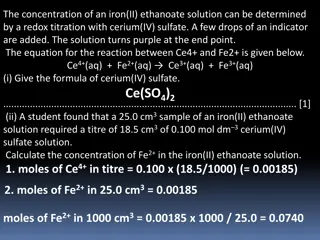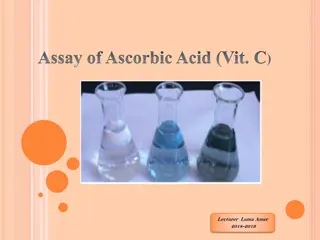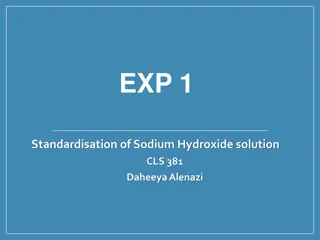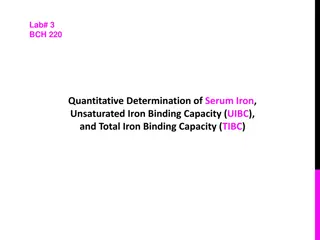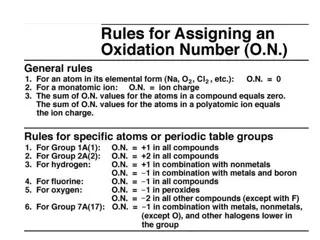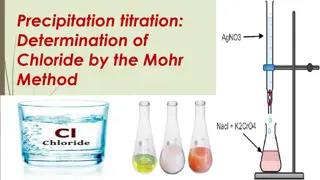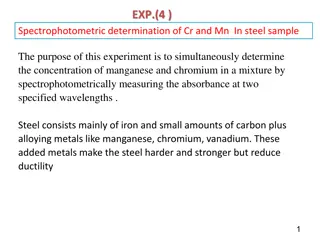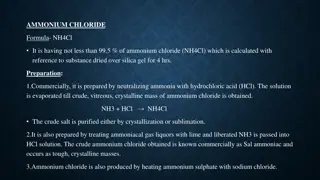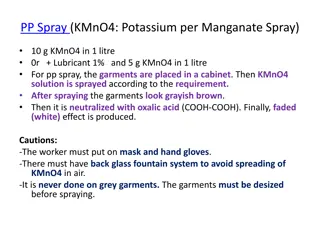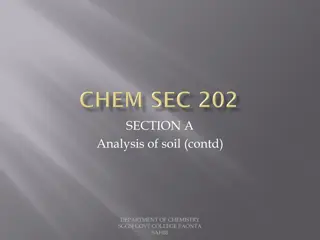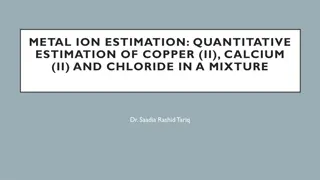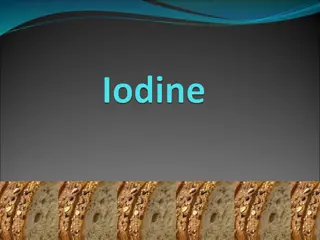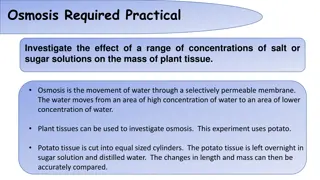Redox Titration: Potassium Permanganate with Iron(II) Salt Assay
Ferrous sulfate (FeSO4.7H2O) is used in medical treatments for iron deficiency. This article discusses the redox titration process involving potassium permanganate and ferrous sulfate, along with the chemical principles, procedure, and calculations involved. Potassium permanganate is a powerful oxidizing agent commonly used in titrations due to its distinctive color changes.
Download Presentation

Please find below an Image/Link to download the presentation.
The content on the website is provided AS IS for your information and personal use only. It may not be sold, licensed, or shared on other websites without obtaining consent from the author. Download presentation by click this link. If you encounter any issues during the download, it is possible that the publisher has removed the file from their server.
E N D
Presentation Transcript
Redox Titration Potassium Permanganate with an Iron(II) Salt Assay of ferrous sulfate (FeSO4.7H2O) ferrous sulfate is the chemical compound with the formula FeSO4.Its molecular weight 278.05,melting point 329.9 C. It has a pale green color as a powder, and as crystals it has a bluish green color, freely soluble in water. The medical uses: It is used medically to treat iron deficiency Together with other iron compounds, ferrous sulfate is used to fortify foods and to treat iron-deficiency anemia.
side effect of ferrous sulfate tablets: Constipation is a frequent and uncomfortable side effect associated with the administration of oral iron supplements. Stool softeners often are prescribed to prevent constipation. Chemical principle: In acidic solution, potassium permanganate rapidly and quantitatively oxidizes iron(II) to iron(III), while itself being reduced to manganese(II). The half reactions for the process are:
When these half-reactions are combined to give the overall balanced chemical reaction equation, a factor of five must be used with the iron half-reaction so that the number of electrons lost in the overall oxidation will equal the number of electrons gained in the reduction The complete molecular equation should be: 10FeSO4 + 2KMnO4 + 8H2SO4 5Fe2(SO4)3 + K2SO4 + 2MnSO4 + 8H2O
Procedure: 1. Carefully crush one tablet of ferrous sulfate (Use a mortar and pestle ) transfer in a beaker , Add 15 ml of distilled water and stir to dissolve the solid. 2. Add 8 ml of 3 Nsulfuric acid, H2SO4 , to the sample and carefully filter the sample 3. Titrate with Potassium Permanganate Solution to the endpoint. The end point is the first appearance of a permanent, pale pink color.
Calculation: 1eq. S of KMnO4 1eq. S of FeSO4 1L 1N KMnO4 ( Wt/eq.Wt.) .FeSO4 1L 1N KMnO4 278.05 g/eq. FeSO4 1000 ml 1N KMnO4 278.05 g/eq. FeSO4 1000 1ml 1N KMnO4 0.27805 g/eq. FeSO4
Notes: Potassium permanganate is one of the most commonly used oxidizing agents because it is extremely powerful, inexpensive, and readily available. Potassium permanganate is particularly useful among titrants since it requires no indicator to signal the endpoint of a titration. Potassium permanganate solutions even at fairly dilute concentrations are intensely colored purple. The product of the permanganate reduction half- reaction, manganese(II), in dilute solution shows almost no color.
Questions for discussion: 1. How can you prevent side effect from using ferrous sulfate tablets 2. Why we use the factor five with the iron- half reaction 3. Explain why: KMnO4 is the most commonly used oxidizing agent 4. Explain why: no external indicator is required for this titration 5. Explain why the dark purple color of KMnO4 solution disappears entirely during the titration 6. Explain why: Filtration in this experiment is very important 7. Explain why: When one drop excessof potassium permanganate has been added to the sample, the sample will take on a pale red/pink color?
